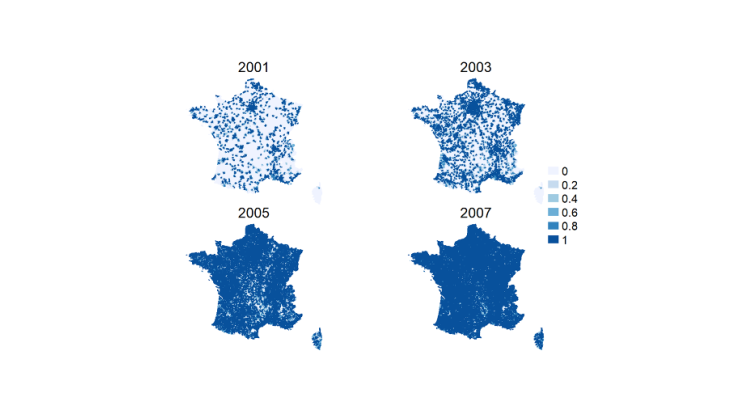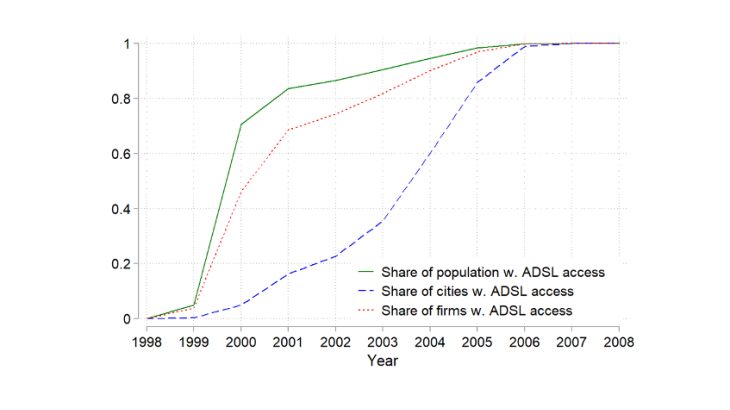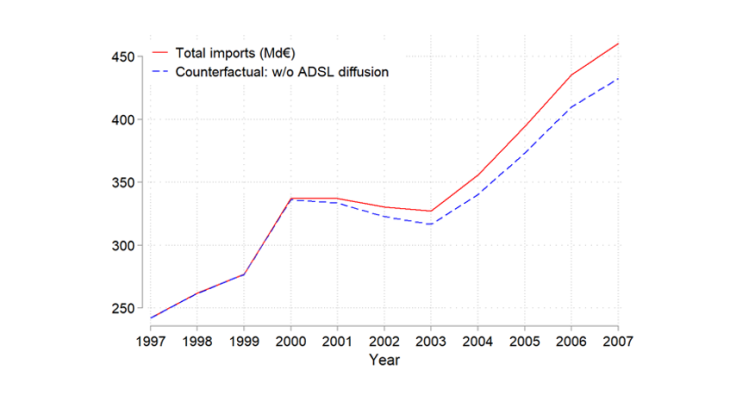Note: The broadband coverage of French municipalities is given for four years. A figure of between 0 and 1 (i.e. 0% and 100%) indicates that a town has partial coverage or that it only gained access during the year in question.
What is the impact of broadband internet on international trade?
Several recent studies have considered the impact of broadband on wages, the unemployment rate or firms’ productivity (see Bertschek and al. (2016) for a review of the literature). However, little research has focused on its impact on international trade, even though ICT diffusion is a major driver of globalisation.
Indeed, broadband is seen as reducing the information frictions that hamper most economic relations. For instance, Friedman (2005) predicts the “death of distance” and explains that new information technologies have done away with the traditional obstacles stopping ideas and goods from flowing freely. This point of view has since been called into question by economists who believe that the physical distance in trade has lost little of its importance, despite ICT diffusion (see Disdier and Head, 2008). It therefore remains relevant to question the impact of broadband diffusion on international trade.
At the macroeconomic level, Clarke and Wallsten (2006) show that a country’s internet penetration is positively correlated with an increase in goods exports, particularly for developing countries that export to developed countries. This positive impact could be linked to the reduction in communication costs and those related to finding the right trading partner.
In a study based on individual data from Norwegian firms, Akerman et al. (2018) do not find a direct impact of broadband access on firms’ trade. They do however show that broadband increases the sensitivity of international trade to distance between importing and exporting countries, as well as the sensitivity to the economic size of their markets. Consequently, broadband would appear to change the geography of international trade due to the reduction in information frictions.
The French case: a heterogeneous impact on goods imports
France Télécom commercially launched broadband internet in 1999 using the Asymmetric Digital Subscriber Line (ADSL) technology. This technology uses the existing telephone network (around 33 million physical copper lines) to transmit numerical data. The diffusion of broadband was very gradual: as Chart 1 shows, the big urban centres were equipped at the start of the 2000s whereas rural and remote areas had to wait ten years. One of the reasons why broadband took so long to roll out was that telephone lines had to be eligible for this new technology. Indeed, in 2000, only 11 million lines (or one-third of the network) could be equipped with this technology. Furthermore, massive infrastructure investment was required to modernise the remaining two-thirds.


